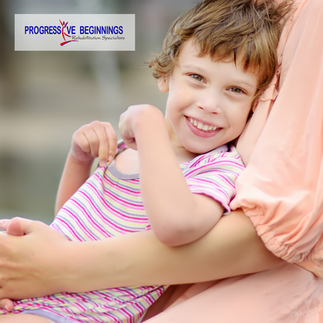Let’s Talk Cerebral Palsy
- jessicapt

- Mar 24, 2022
- 3 min read
March is Cerebral Palsy Awareness Month!

What is Cerebral Palsy?
CP is a nonprogressive lesion of the brain that occurs before two years of age, that results in an abnormal development of movement and posture.
CP can be accompanied by impairments such as speech, vision, hearing, and perceptual function
Damage to the brain can affect the ability to perform daily activities and worsen as the individual grows, which is when therapy comes in to improve physical function
CP is the second most common neurologic impairment in childhood (intellectual disability is the first)
Different types of CP
There are several types of CP, based on the area of the body affected and the type of movement problem.
Spastic/hypertonic CP: muscle spasms occur with movement
Ataxic CP: difficulty with balance and coordination
Dyskinetic/athetoid CP: unstable posture created by changes in muscle tone and movement; involuntary movements
Hypotonic/atonic CP: instability and floppiness in muscles
Mixed CP: combination of two or more types
Quadriplegia
Diplegia
Hemiplegia
Monoplegia
Signs/symptoms
Signs and symptoms differ from one individual to the next and can start to appear as little as a few months old.
Most common include:
Tight muscles/joints
Muscle weakness
Lack of balance and coordination
Muscle tremors
Others include:
Difficulty speaking or being understood
Vision and hearing problems
Joint pain
Seizures
Difficulty holding urine
Learning disorders
Interventions
Interventions are based on severity of patient and are different for everyone, so an individualized approach is ideal
Strength and flexibility exercises to expand ROM, reduce stiffness, and relieve pain
Examples include: joint rotations, trunk twists
Gastroc, quad, hamstring, and shoulder stretch
Gentle stretching to counter the deformity (stretch gastroc due to plantarflexion for example)
Heat treatment
Soft tissue massage
Botox
Use of equipment: Exercise balls, free weights, resistance bands, therapy pool, electrical stimulation
Therapy pool adds extra resistance to help strengthen muscles
Improve posture through exercises that involve sitting, kneeling, and standing
Maintaining upright posture, chin tucks, scapular retractions
Promotion of normal developmental skills through play using creeping, rolling, cruising, pulling to stand, standing, and walking.
Sensory input stimulation
Textured materials, sand playing, water playing, massage, weight bearing
To increase muscular tone: firm handling, tapping, vibration, brushing, quick movements, deep pressure, swinging, bouncing
To decrease muscular tone: rocking, firm touch, stroking, slow movements, singing, relaxing music, swaddling
Improvement for functional skills can include elongating shortened muscle groups, facilitate dynamic mobility, promote WB activities, improve balance, increase muscular strength and tone, and educate the child/parent to learn new skills
Research
During a course for the Physical Therapist Assistant program, an evidence-based research paper was to be presented based on a patient that sparks interest to oneself or a diagnosis to expand further knowledge. In this paper, foreground questions were to be created and one of which included:
Are open or closed chain strengthening and ROM exercises more beneficial to increase ROM and strength for children diagnosed with CP?
Article: “To determine effectiveness of closed-kinetic chain exercise on motor control and function as compared to open kinetic chain exercise in children with spastic diplegic CP” from the Indian Journal of Physiotherapy and Occupational Therapy
30 subjects (GMFCS I-II) were assigned to two groups. Group A received loaded sit to stand exercise (closed kinetic chain) 3 days a week, and 3 sets per day for 6 weeks. Group B received progressive resisted lower limb strength (open kinetic chain) for 3 session per week for 6 weeks, and one day’s rest between sessions.
Group A performed sit to stands 10 times with 20% of 1-RM STS load with an increase in resistance to 50%.
Group B focused on strength training for the hip flexors, hip extensors, hip abductors, hip adductors, knee flexors and extensors, and ankle dorsiflexors and plantarflexor muscles in the standardized position (sitting, prone, or supine)
Results: closed chain and open chain were equally effective in improving strength in the lower limbs of children with CP, however progressive resisted lower limb strength was slightly more effective.
References
Blog written by: Amanda Casing, SPTA




















































Comments